TWO WARS AND A WEDDING: Betsy in Greece
With three weeks to go until Two Wars and a Wedding appears in stores, it’s time to explore Greece– 1896 Greece, that is!
In 1896, Smith College grad Betsy Hayes arrives in Athens to study at the American School of Classical Studies at Athens, one of two female students among a bunch of Harvard guys. At the time, the American School (below) had its rustic touches; a pack of predatory goats had to be chased out of the school’s olive grove– and presumably kept from nibbling on any forgotten texts left lying around.

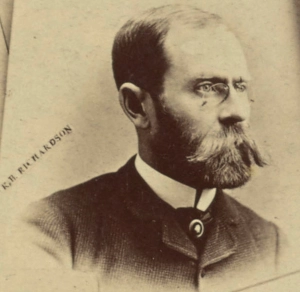
The school was run by a Dartmouth man, Rufus Richardson (above), who felt strongly that females belonged in the library and not in the field. Although the American School had obtained permits to undertake a dig at Corinth (below), it was made very clear that the female students weren’t allowed to be in on it– even if they did take part in the school’s “treks” to places like Delphi, riding donkey-back across rough terrain and bunking down in remote villages.
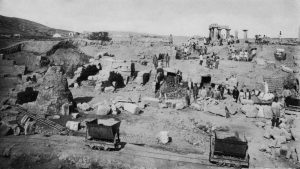
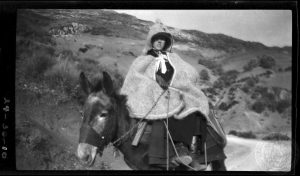
(Confession: that picture of an American School student on a donkey at Delphi is from much later– 1924. Despite the thirty year gap, Dorothy Burr Thompson, a Bryn Mawr grad, had an experience very similar to my 1896 Betsy and Betsy’s real life inspiration, Harriet Boyd Hawes. I feel the image captures the same spirit, don’t you?)
But whatever the frustrations, Athens in 1896 was a fascinating place for a young classicist. It wasn’t just the American School: there were colleagues to meet at the French, British, and German schools, lectures by old Dr. Doerpfeld of the German Institute, tours of the Acropolis, treks to places like Mycenae and Delphi, and the chance to meet some of the greats in the field. (Below you can see the Lion Gate at Mycenae as Betsy would have seen it. Quite different from the same spot today!) Mycenae had been excavated, rather sloppily, by the legendary Heinrich Schliemann, the man who discovered Troy.
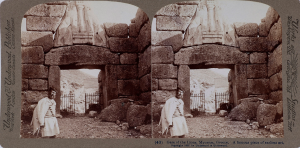
And speaking of the Schliemanns…. Sophia Schliemann (below), widow of Heinrich Schliemann, and an experienced excavator in her own right, held court at the palatial Iliou Melathron (also below), the Schliemanns’ Athens mansion. Sophia Schliemann shows up as a side character in this book. (For length reasons, I cut most of her appearance, but I have many thoughts that may need to be their own post…. Or possibly an outtake with the deleted scene.)
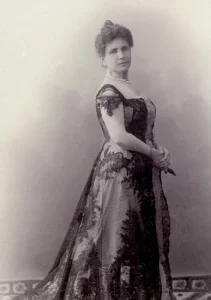
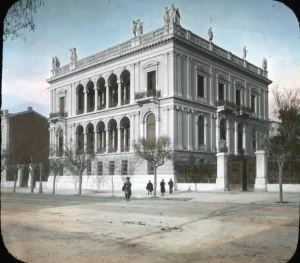
And then there was Athens itself, a bustling, cosmopolitan city with ancient ruins at its core, a contrast of very modern mansions and very decaying statuary. The picture of Athens below, from the Smith College archives, was possibly taken by Harriet Boyd, my model for Betsy, during her time at the American School in 1896.

Greece had been occupied by the Ottoman Empire, only gaining independence in the 1830s. Athens was declared the capital of the new kingdom of Greece. Mansions, great civic buildings, and grand boulevards sprang up in this new European capital, often cheek by jowl with both classical ruins and just ruinous ruins, legacies of the long Ottoman occupation. With its hotels like the Grand Bretagne (where Betsy stays), its cafes and shops, Athens set out to claim its place in Europe as a modern Belle Epoque city. In the summer of 1896, right before Betsy gets there, Athens hosted the Summer Olympics.
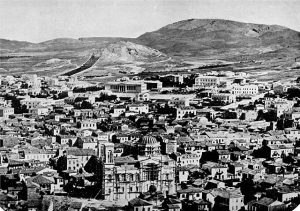
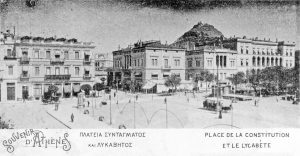
The American School provided housing for its male students, but not its female ones. Betsy’s one female colleague, Ethel, took lodgings with the Reverend Kalopothakis, a Presbyterian minister (we’ll meet his Radcliffe-educated doctor daughter later). But Betsy (and my inspiration for Betsy, the real life Harriet Boyd Hawes) finds herself invited to stay as a guest in the high society home of a Greek heiress married to a Scotsman and is plunged into court circles, meeting government ministers and even the Queen herself….
There’s a somewhat younger Queen Olga below, wearing an outfit specially designed to incorporate elements of traditional Greek dress. Given that Olga was Russian, and her husband, the King of Greece, was actually Danish, they had to work hard at proving their Greek bona fides as monarchs of Greece.
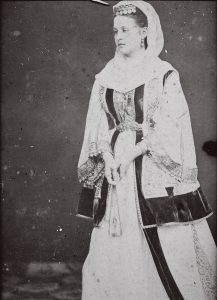
Both Queen Olga (daughter of the Russian Tsar) and her daughter-in-law, Princess Sophie (sister of the German Kaiser, because in late 19th century Europe all the royal houses are related and they’re ALL descended from Queen Victoria), are enchanted by having their own pet American and adopt Betsy as their personal project, as they did the real Harriet Boyd. (The picture of an older Queen Olga below is from 1903, but I adore this particular picture with that Miss Marple stare. Queen Olga as Jessica Fletcher, solving crime in 1890s Athens, anyone? In the next photo is Princess Sophie with her husband, the Crown Prince.)
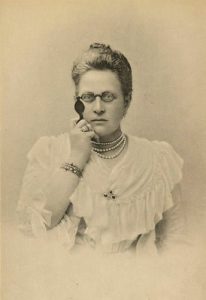

It wasn’t all society balls. Athens in 1896 and 1897 was a place where things were happening. Medical students rose against their professors, occupying university buildings. But, much more importantly, the first rumblings of war were beginning to made themselves heard, as the island of Crete rose in revolt against the Ottoman Empire….
But this post has already gone on long enough, so we’ll get to that next week!
Would you like to see more about the historic sites Betsy visits in Greece? Or social life in Athens? I have folders and folders of pictures (including lots of gowns) so let me know what you want to see and I’ll dig into my files!
Speaking of my files… for your amusement, here’s someone else in Athens. Yep, that’s me, on the Acropolis, wearing rather fewer layers than Betsy….
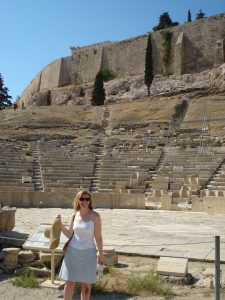
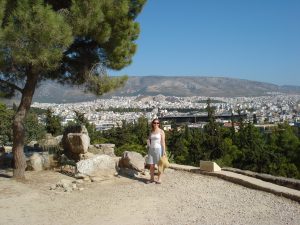
For more about life as a student in 1896 Athens, check out Mary Allesbrook’s Born to Rebel: the Life of Harriet Boyd Hawes.
Disclaimer: this isn’t meant to be a comprehensive history of anything; it’s mostly an excuse to show some of the images I collected while researching. You can find more details about the actual history in the historical note at the back of the book. You can also find a very long bibliography on my website.
See you next week as we go with Betsy to the front lines of the Greco-Turkish War of 1897….

I just received my ARC of 2WW last night and finished/ loved it!
– Are there any historical photographs/moving images in your files from the Vitagraph Company that accompanied the Rough Riders?
– Or more close up images of Greek excavations?
– An inspiration photo of Betsy’s snazzy purple suit??
Good questions! Yes to the close up images of Greek excavations (so many!), no to the Vitagraph (although I imagine they must be around somewhere in someone’s film archive!), and I know I have Betsy’s purple traveling suit around somewhere….
Ohhh let me Google-ing commence! Thanks for the info 🙂